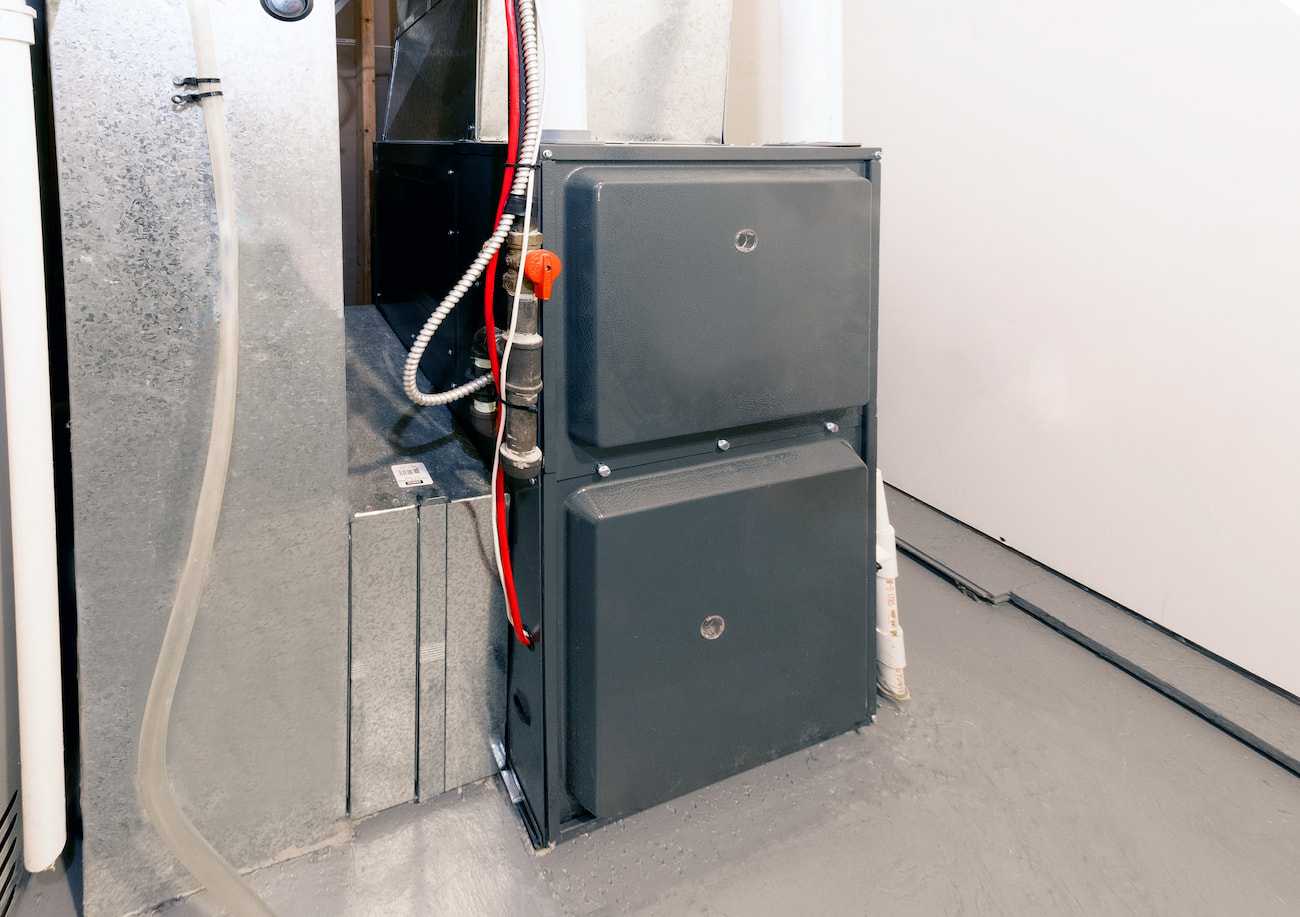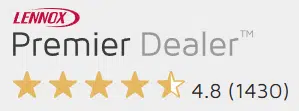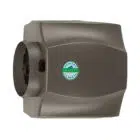
Table of Contents
A properly functioning furnace is the guarantee of the comfort and well-being of your home. But what happens when your Carrier furnace encounters a problem? Fear not; your furnace is equipped with an ingenious feature that can provide valuable insights into the issue — error codes. In this article, we will explore the most common Carrier furnace codes, decipher their meanings, and provide troubleshooting steps to help you maintain a cozy, warm home.
Understanding Carrier Furnace Error Codes
Carrier furnace error codes are alphanumeric or blinking LED codes that appear on the furnace’s control board. These codes act as a language that your furnace uses to communicate the specific issue it is encountering. When you see an error code, it means your furnace’s diagnostic system has detected a problem, and it’s providing you with a clue to help pinpoint the issue.
Carrier error codes can take various forms, depending on the specific model of your furnace. The two most common formats are:
- Alphanumeric Codes: Some Carrier furnaces display error codes in an alphanumeric format, such as “33” or “13.” These codes can be found in your furnace’s user manual, which provides detailed explanations of what each code signifies.
- Blinking LED Lights: Many Carrier furnaces use a series of LED lights to indicate error codes. These lights blink in specific patterns, with each pattern corresponding to a different error code.
Understanding these codes can empower you to diagnose and resolve issues with your Carrier furnace, ensuring your home stays comfortably warm.
Carrier Furnace Codes: Explanation and Troubleshooting
Now that we have a good grasp of what Carrier furnace error codes are and how they’re formatted, let’s take a closer look at some of the most frequently encountered error codes and explore what each one signifies.
Error Code | Explanation | Troubleshooting |
|---|---|---|
13 | Furnace error code 13 occurs when the furnace overheats, causing a lockout of the limit switch. This is a safety measure to prevent further heating. | 1. Turn off the furnace to allow it to cool down.
2. Replace dirty or clogged air filters.
3. Ensure all vents and registers are open and unobstructed.
4. If the issue persists, seek professional assistance.
|
14 | Error code 14 indicates a problem with the furnace’s ignition system, often caused by repeated failed ignition attempts. | 1. Check the gas supply and ensure the gas valve is open.
2. Inspect and replace a malfunctioning igniter if necessary.
3. Clean or replace the flame sensor if it’s dirty or damaged.
4. If the problem continues, contact an HVAC technician.
|
33 | Furnace error code 33 suggests a problem with the limit circuit, typically caused by overheating. This may lead to the furnace shutting down. | 1. Check air filters and replace if they are clogged.
2. Inspect the limit switch for any obstructions or damage.
3. If the issue persists, consult a professional technician.
|
34 | Error code 34 points to an issue with the furnace’s ignition system, which may prevent the furnace from starting. | 1. Verify the gas supply and gas valve are functioning correctly.
2. Clean or replace a faulty igniter.
3. Examine the flame sensor for cleanliness or damage.
4. Contact a technician if the problem remains unresolved.
|
42 | Error code 42 indicates a problem with the inducer motor or related components, which play a crucial role in the furnace’s operation. | 1. Check for obstructions in the inducer motor’s vent.
2. Inspect the motor for wear and damage.
3. Seek professional assistance if the problem persists.
|
21 | Error code 21 suggests a lockout of the gas heating system, typically due to various issues that may compromise safety. | 1. Check the gas supply and ensure it is flowing correctly.
2. Inspect the igniter and flame sensor for issues.
3. Contact an HVAC technician for a professional evaluation.
|
31 | Error code 31 indicates a problem with the pressure switch, a critical component for furnace operation. This code may prevent the furnace from starting. | 1. Check for blockages in the vent system.
2. Ensure the pressure switch tubing is clear and properly connected.
3. Seek professional help if the issue continues.
|
32 | Error code 32 is a specific pressure switch fault related to low heat conditions. | 1. Verify the pressure switch tubing is clear and properly connected.
2. Inspect the venting system for obstructions.
3. Contact an HVAC technician for further diagnosis and repair.
|
24 | Error code 24 suggests that the secondary voltage fuse in the control circuit is open or malfunctioning. | 1. Check and replace the secondary voltage fuse, if necessary.
2. Inspect the control circuit for any loose connections or faults.
3. Seek professional assistance for complex issues.
|
44 | Error code 44 indicates a problem with the blower motor or related components, affecting air circulation. | 1. Check the blower motor for obstructions or damage.
2. Inspect wiring and connections.
3. Contact a technician for detailed troubleshooting.
|
Check out the top 10 most common furnace repair problems in our previous article via the link below.
https://thehvacservice.ca/understanding-furnace-issues-from-filter-sizes-to-water-leaks/
The Most Common LED light codes of Carrier Furnace
In addition to alphanumeric error codes, many Carrier furnaces also use LED light codes to communicate issues with the system. These light patterns can provide valuable insights into the furnace’s operation and help homeowners diagnose problems quickly.
LED Code | Meaning |
|---|---|
OFF | The LED is not lit, indicating that the furnace is not receiving power or is in an off state. |
ON | The furnace is operating normally with no immediate issues. |
Steady Blue | This is a common indication of normal operation when the furnace is in standby mode. |
Steady Yellow | Normal operation with a call for heat. The furnace is heating your home as expected. |
Rapidly Flashing Yellow | The furnace is in cooling mode. |
Red LED 1 is ON | The furnace is operating in emergency heat mode. |
Red LED 2 is ON | A microprocessor malfunction, indicating that the furnace’s microprocessor has encountered an issue and needs to be reset for proper operation. |
LED 2 is flashing | A potential issue with line voltage polarity being reversed, which means the electrical connections may not be correctly oriented. |
Yellow LED 3 is ON | The furnace provides a higher level of heating output to meet increased heating demands, typically in response to a significant drop in temperature or the thermostat’s settings. |
Green LED 4 is ON | The furnace is operating in low heat mode. In low heat mode, the furnace provides a reduced level of heating output to maintain a more moderate temperature. |
When to Call For a Professional Help
Sometimes, despite our best efforts, our trusty Carrier furnace might throw a curveball that’s a bit too puzzling to handle on our own. In those moments, it’s a wise move to bring in the professionals—those HVAC experts who have the experience, the know-how, and the right tools to tackle the trickiest furnace issues:
Here are scenarios in which you should not hesitate to call for professional assistance:
- Complex Error Codes: If you encounter complex or repeated error codes that you cannot resolve through basic troubleshooting, it’s time to reach out to an HVAC professional. They have the knowledge and equipment to diagnose and fix intricate issues.
- Gas Supply Problems: If you suspect problems with the gas supply, such as gas leaks or irregular gas flow, it’s essential to call a professional immediately. Gas-related issues can be dangerous and require immediate attention.
- Electrical Issues: When dealing with electrical problems, especially if they involve the furnace’s wiring, circuitry, or microprocessor malfunctions, it’s best to let a qualified technician handle the diagnosis and repairs to ensure safety.
- Frequent Ignition Failures: If your furnace experiences repeated ignition failures or struggles to maintain a flame, it may be a sign of a deeper issue that requires professional inspection and repair.
- Ventilation and Ductwork Problems: If you suspect issues with the ventilation system, ductwork, or airflow in your home, an HVAC technician can assess and address these problems, which can impact your furnace’s efficiency and performance.
When you encounter any of these situations or require professional assistance with your Carrier furnace, don’t hesitate to reach out to HVAC Service Solutions. Our team of experienced technicians is ready to provide timely and reliable solutions to keep your home comfortable and your Carrier furnace in optimal condition.
Find out more information about our professional Carrier furnace repair service in Ontario on our website.
How You Can Prevent Carrier Furnace Repair Issues

When it comes to your Carrier furnace, an ounce of prevention truly is worth a pound of cure. In just a few straightforward steps, you can shield your heating system from a host of common issues. It’s a lot easier and more cost-effective to dodge problems from the start than to wrestle with them when they arise.
By following these furnace maintenance guidelines, you can prevent common problems and extend the lifespan of your furnace:
1. Regular Filter Replacement: Change or clean the air filter according to the manufacturer’s recommendations. A clean filter ensures proper airflow and reduces strain on the system.
2. Keep Vents and Registers Clear: Ensure all supply and return vents, as well as registers, are free from obstructions like furniture, curtains, or dust. This helps maintain consistent heating.
3. Professional Inspections: Schedule an annual or bi-annual inspection with an HVAC technician. They can identify and address potential issues before they become major problems.
4. Clean the Furnace: Keep the area around the furnace clean and free of debris. This prevents dirt and dust from entering the system.
5. Check the Thermostat: Regularly verify that your thermostat is functioning correctly. Replace the batteries if necessary and ensure it’s set to your desired temperature.
6. Inspect Ventilation: Examine the venting system for any blockages or damage. Make sure there are no obstructions in the vent pipes.
7. Carbon Monoxide Detector: Install and regularly check carbon monoxide detectors in your home. Carbon monoxide leaks can be deadly, and a detector can provide early warnings.
8. Annual Maintenance Plan: Consider enrolling in an annual maintenance plan with your HVAC provider. This can include routine check-ups and priority service when issues arise.
9. Proper Insulation: Ensure your home is adequately insulated, as this helps the furnace work efficiently and reduces strain on the system.
10. Seal Leaks: Seal any gaps or leaks in your home’s doors, windows, and ductwork to prevent heat loss, helping the furnace maintain a consistent temperature.
Our comprehensive heating maintenance plans are designed to provide regular check-ups and priority service to keep your Carrier furnace running smoothly year-round. Enjoy peace of mind and a comfortably heated home with our expert care.
Conclusion
Your Carrier furnace is more than just a heating system; it’s a reliable companion that keeps your home warm and cozy, even in the harshest of winters. Understanding its error codes and LED light indicators can empower you to troubleshoot common issues and maintain a comfortable indoor environment.
At HVAC Service Solutions, we’re your trusted partner for all things heating and cooling. Our expert technicians are just a call away, ready to ensure your Carrier furnace operates flawlessly. From emergency heat mode to line voltage issues, we’ve got you covered. Reach out to us today via the link below.
Share



















